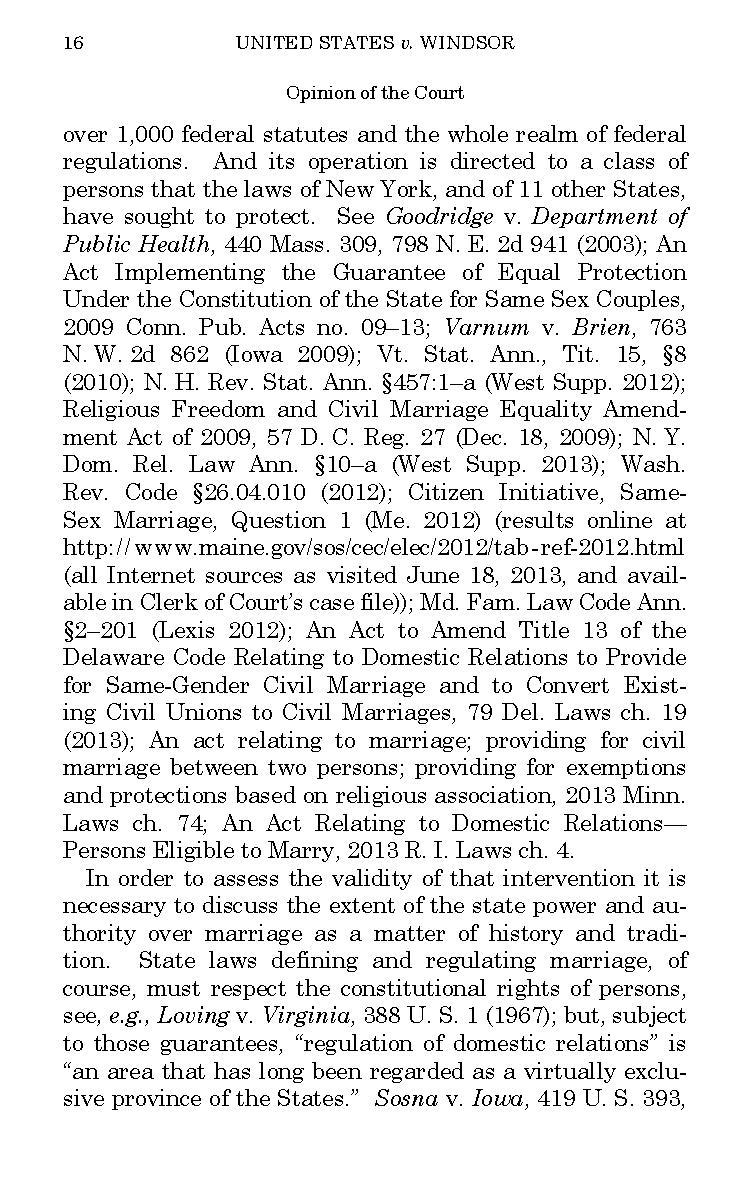over 1,000 federal statutes and the whole realm of federal regulations. And its operation is directed to a class of persons that the laws of New York, and of 11 other States, have sought to protect. See Goodridge v. Department of Public Health, 440 Mass. 309, 798 N.E.2d 941 (2003); An Act Implementing the Guarantee of Equal Protection Under the Constitution of the State for Same Sex Couples, 2009 Conn. Pub. Acts no. 09–13; Varnum v. Brien, 763 N.W.2d 862 (Iowa 2009); Vt. Stat. Ann., Tit. 15, §8 (2010); N.H. Rev. Stat. Ann. §457:1–a (West Supp. 2012); Religious Freedom and Civil Marriage Equality Amendment Act of 2009, 57 D.C. Reg. 27 (Dec. 18, 2009); N.Y. Dom. Rel. Law Ann. §10–a (West Supp. 2013); Wash. Rev. Code §26.04.010 (2012); Citizen Initiative, Same-Sex Marriage, Question 1 (Me. 2012) (results online at http://www.maine.gov/sos/cec/elec/2012/tab-ref-2012.html (all Internet sources as visited June 18, 2013, and available in Clerk of Court's case file)); Md. Fam. Law Code Ann. §2–201 (Lexis 2012); An Act to Amend Title 13 of the Delaware Code Relating to Domestic Relations to Provide for Same-Gender Civil Marriage and to Convert Existing Civil Unions to Civil Marriages, 79 Del. Laws ch. 19 (2013); An act relating to marriage; providing for civil marriage between two persons; providing for exemptions and protections based on religious association, 2013 Minn. Laws ch. 74; An Act Relating to Domestic Relations—Persons Eligible to Marry, 2013 R.I. Laws ch. 4.
In order to assess the validity of that intervention it is necessary to discuss the extent of the state power and authority over marriage as a matter of history and tradition. State laws defining and regulating marriage, of course, must respect the constitutional rights of persons, see, e.g., Loving v. Virginia, 388 U.S. 1 (1967); but, subject to those guarantees, "regulation of domestic relations" is "an area that has long been regarded as a virtually exclusive province of the States." Sosna v. Iowa, 419 U.S. 393,
